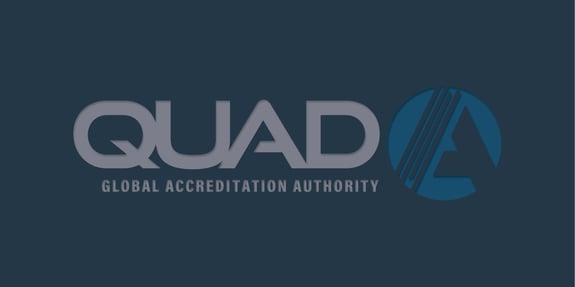The American Physical Therapy Association (APTA) recently released an article titled Want to Become a Rehabilitation Agency Under Medicare? in the November edition of APTA Magazine. The article informs physical therapists who may be providing care in private practice, as an individual provider, about the prospect of becoming an institutional provider under Medicare. It discusses the steps and benefits of becoming a Medicare-certified facility and things to consider when making the decision. The article discusses several aspects of the enrollment process and makes mention of accreditation as an avenue to receive approval. What the article understandably does not detail is that the American Association for Accreditation of Ambulatory Surgery Facilities (QUAD A) is currently the only Medicare approved deeming authority that is able to provide accreditation and recommend facilities for Medicare approval. Additionally, due to ongoing efforts by the federal government to manage limited resources, facilities seeking approval in this program are very unlikely to receive a survey by their State Survey Agency (SA). Further, the article tries to clarify that the industry term rehabilitation agency falls under the Medicare definition of Outpatient Physical Therapy (OPT). In light of the recent APTA Magazine article we thought it would be helpful to follow up on the role that QUAD A, and accreditation, plays in the Medicare enrollment process.
Enrollment
Facilities that want to participate in Medicare as an OPT facility, first must file the appropriate Medicare enrollment form with the relevant Medicare Administrative Contractor (MAC). These organizations are responsible for Medicare payments and must provide approval before the facility can schedule a survey for compliance with the federal regulations. Without this step, the accreditation and recommendation for approval will not be effective since the MAC will not have an active record to tie in the recommendation.
Once the facility receives its approval from the MAC, QUAD A may conduct the onsite survey to assess the applicant’s compliance with federal regulations. These requirements ensure that the facility is compliant with the minimum requirements for safety, documentation, and operational policies and practices to participate in federal programs. Once QUAD A has confirmed compliance, we can recommend that Medicare approve the facility for participation and reimbursement.
Importantly, any facility wishing to enroll must already be providing care and must continue to do so throughout the survey process and while awaiting final approval and the issuance of its CCN or billing number. The facility may either bill for the services provided in the interim under the individual provider’s NPI number or hold the billing and submit all bills from the facility’s effective date forward, upon receiving the CCN, but may not submit for payment twice.
You may be trying to determine whether the enrollment process is financially worth the effort. When assessing the benefits of enrollment, one may consider that enrollment as an OPT allows multiple types of therapy services including occupational therapy, physical therapy, and speech language pathology. Therefore, for example, a physical therapist may partner with a speech language pathologist to balance the need for physical space with less space intensive needs for speech therapy. Additionally, when these professionals treat different patient populations, the diversity provides some protection from economic risks. It may also be attractive that the program allows in-home care, the use of assistants to provide care with reimbursement, and a rotation of staff (including coverage during vacations and illness) under a single billing number that reduces the need to manage unwieldy information from many individual providers.
Accreditation
Under substantial human resources and budgetary strain, several years ago the federal government established a system to prioritize survey and certification activities, by placing providers into tiers. State Survey Agencies (e.g. the Illinois Department of Health) use federal funds to conduct onsite surveys for enrollment or continued enrollment in Medicare. The tiering system requires the state to complete all surveys in the higher tier before proceeding to the next, for example the state must complete all Tier 1 surveys prior to conducting any Tier 2 surveys.
Under this method, the OPT program was placed in Tier 4, the lowest tier. This means that a state would need to complete all surveys at Tiers 1, 2, and 3 before moving on to OPTs. In other words, almost no state would be conducting OPT surveys. Additionally, according to Medicare’s guidance once an accreditation option is available for a Tier 4 provider, the state should direct applicants to the accreditation organization rather than conduct surveys on such providers. Therefore, essentially all OPTs will need to coordinate with QUAD A to become enrolled in a timely manner.
In response to the need for facilities to receive surveys, and the low likelihood that states would be able to serve them, QUAD A developed its OPT program in 2011. The OPT program accredits rehabilitation agencies, as well as clinics and public health agencies (as defined by Medicare) that provide multidisciplinary services to upgrade the physical functioning of handicapped disabled individuals. By way of this accreditation and by virtue of Medicare approving QUAD A as a “deeming authority”, QUAD A in turn recommends facilities for Medicare approval so facility may begin billing for services.
Being accredited by QUAD A demonstrates the facility’s dedication to making patient safety its number one priority and to ongoing performance improvement. The survey ensures the facility meets Medicare’s minimum requirements. Simultaneously, this process opens new potential avenues for interdisciplinary collaboration and new care models for therapy patients. To achieve QUAD A accreditation, a facility must comply with 100% of the applicable standards
Learn more about the application process.


